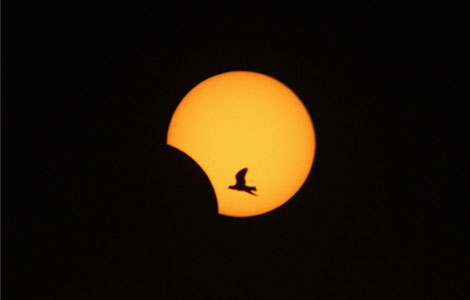Russian meteor studied for clues to next one
Updated: 2013-11-08 07:56
By CHEN JIA in San Francisco (China Daily USA)
|
||||||||
On Feb 15 of this year, a 60-foot-wide space rock travelling 43,000 miles per hour - 60 times the speed of sound - ripped into Earth's atmosphere above Chelyabinsk, Russia and exploded with the force of half a million tons of TNT. A team of 59 scientists from nine nations — including the US and China — studying the event released their findings on Wednesday.
"Chelyabinsk is truly a wake-up call for all of us," Yin Qingzhu, a UC-Davis geology professor, told China Daily on Wednesday. "If humanity does not want to go the way of the dinosaurs, we need to study an event like this in detail."
Yin said that all of the researchers confirmed that the Chelyabinsk meteorite was an "ordinary chondrite", or stony non-metallic meteorite, and it is "special" because of it being "ordinary".
"If the next big bad one is coming and strikes the earth again, the likelihood of it being an ordinary chondrite is very high," he said.
The research started almost immediately after the event on Feb15, when the meteorite, glowing 30 times brighter than the sun, hit with a force strong enough to knock people off their feet miles away and shatter the windows of 3,600 blocks of apartments.
Only 0.05 percent of the original rock reached the surface of the Earth - about five tons worth - in shattered pieces. The largest, weighing about 1,400 pounds, bored a 22-foot-wide hole in the two-foot thick ice covering Lake Chebarkul. Scientists recovered it on Oct16.
"Each team member had their own expertise," Yin said. "We each covered different aspects of the project. As a result, we were able to put together a comprehensive documentation of the Chelyabinsk event in a short time frame."
He noted that less than one percent of the Chelyabinsk-sized space rocks out there have been documented, meaning that more than 99 percent of similar meteors that can give a populated region a bad day remain undetected.
"This is why we need a new technology development to detect more of these kinds of objects through a systematic survey, and study the fallen meteorites in laboratories in greater detail. Chelyabinsk is a violent reminder," he said.
Yin said that studying the event can turn Chelyabinsk into the "poster child" for developing a future asteroid impact mitigation strategy for our children and our children's children.
Zhou Qin, a researcher at the national astronomical observatories of the Chinese Academy of Sciences, told China Daily the event was the largest airburst on earth since 1908, when a meteorite perhaps three times the size of Chelyabinsk exploded over Siberia with a force estimated at 15 million tons of TNT, flattening millions of trees for miles around.
"It is an opportunity not only to study the impact of the event itself, but also to evaluate the hazard of the near-Earth objects. So, this was attractive for all of the international researchers," Zhou said.
"The Chinese team made the major contribution to precise apatite U-Pb dating of this meteorite using their state-of-the-art SIMS instrument and techniques," said Li Xianhua, a researcher of the institute of geology and geophysics with the Chinese Academy of Sciences.
chenjia@chinadailyusa.com

 Politicians court US-Asians amid anti-China sentiment
Politicians court US-Asians amid anti-China sentiment
 Britain remembers war dead
Britain remembers war dead
 Stolen newborn returned to family
Stolen newborn returned to family
 TCM firms should 'learn rules of West'
TCM firms should 'learn rules of West'
 Artists see big picture in CBD's art zone
Artists see big picture in CBD's art zone
 Twitter shares soar 92% in frenzied NYSE debut
Twitter shares soar 92% in frenzied NYSE debut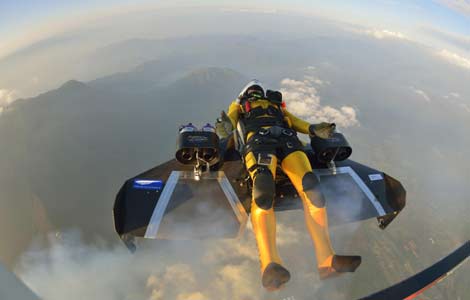
 Fly with the Jetman
Fly with the Jetman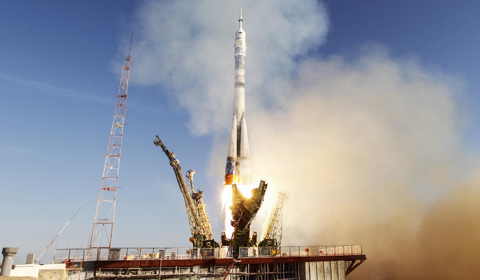
 Soyuz rocket flies Olympic torch to space station
Soyuz rocket flies Olympic torch to space station
Most Viewed
Editor's Picks

|

|
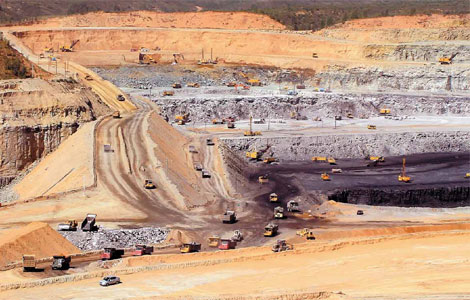
|

|

|
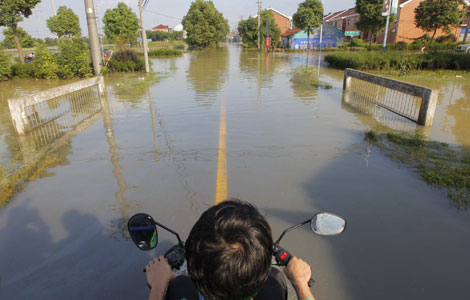
|
Today's Top News
Bank exec describes meeting with Li Keqiang
Russian meteor studied for clues to next one
CIA paying AT&T to provide call records - NYT
Twitter soar 92% in NYSE debut
Registration eased for foreign firms
Possible evidence of Arafat poisoning
Li promises reasonable growth rate
Sex education cartoon an instant online hit
US Weekly

|

|


